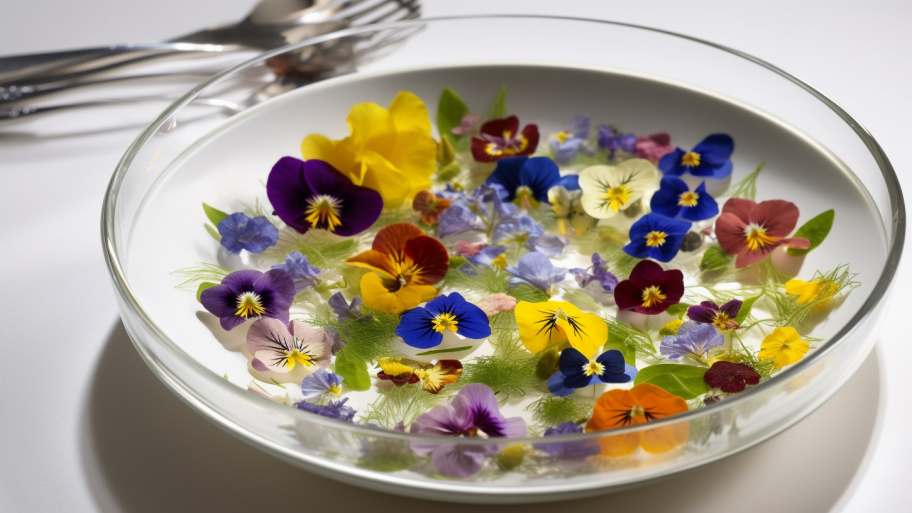Embarking on a spice gardening journey is a thrilling and rewarding experience, allowing you to explore the enchanting world of exotic spices and their rich history. As a Spice Whisperer, you’ll learn the art of cultivating and nurturing these captivating plants, transforming your garden into an aromatic wonderland. In this article, we’ll delve into the secrets of growing exotic spices, ensuring that your garden thrives with the fragrances and flavors of far-off lands.
Understanding Your Spices: The Key to Success
Each spice plant has its unique set of requirements in terms of climate, soil, and care. To create a thriving spice garden, it’s crucial to understand the specific needs of each plant and provide the optimal environment for their growth. Researching the native habitats of these plants will offer valuable insights into their preferred conditions, allowing you to recreate a suitable microclimate in your garden.
For instance, many spices, such as cardamom, ginger, and turmeric, originate from tropical regions and require warm temperatures, high humidity, and well-draining soil to flourish. On the other hand, spices like saffron and coriander are native to more temperate areas and can tolerate cooler climates. Here is a list of ten diverse spices that you can consider growing in your exotic spice garden:
- Cardamom: A popular spice in Indian and Middle Eastern cuisine, cardamom comes from the seeds of a tropical plant in the ginger family. It has a complex, sweet, and spicy flavor, often used in both sweet and savory dishes.
- Ginger: A versatile spice derived from the rhizome of a tropical plant. It has a warm, slightly sweet, and pungent flavor, commonly used in Asian cuisine, baked goods, and beverages.
- Turmeric: A vibrant yellow-orange spice obtained from the rhizome of a tropical plant. It has a slightly bitter, earthy taste and is a key ingredient in curry powder and many Indian dishes.
- Saffron: A highly prized spice made from the dried stigma of the saffron crocus flower. It imparts a unique earthy, floral, and slightly bitter taste to dishes, as well as a distinctive golden color.
- Coriander: A versatile spice with two edible parts – the leaves (cilantro) and the dried seeds. The seeds have a warm, citrusy, and slightly sweet flavor, used in Indian, Middle Eastern, and Mediterranean cuisine.
- Cumin: A spice derived from the dried seeds of a small, flowering plant. It has a warm, earthy, and slightly bitter taste, and is a staple in Indian, Middle Eastern, and Mexican cooking.
- Cinnamon: A fragrant spice made from the inner bark of trees in the Cinnamomum family. It has a warm, sweet, and slightly spicy flavor, commonly used in baked goods, beverages, and savory dishes.
- Black pepper: This floweing vine comes from the dried, unripe fruit of the Piper nigrum plant. It has a pungent, spicy flavor and is one of the most widely used spices worldwide.
- Allspice: Allspice is a spice made from the dried berries of the Pimenta dioica tree. It has a warm, sweet, and spicy flavor reminiscent of a blend of cinnamon, cloves, and nutmeg, hence the name “allspice.”
- Star anise: A star-shaped spice derived from the fruit of the Illicium verum tree. It has a sweet, licorice-like flavor and is used in Chinese cuisine, as well as in the spice blend known as Chinese five-spice powder.
Each of these spices offers unique flavors and aromas, making them excellent additions to your garden. By understanding their specific growing requirements and providing the appropriate care, you can enjoy a thriving spice garden that adds an exotic touch to your culinary creations.
Caring for Your Exotic Spice Garden
Once you’ve identified the ideal conditions for your chosen spices, it’s time to focus on providing them with the right care to ensure their growth and prosperity. Regular watering, fertilization, and pruning are essential aspects of maintaining a healthy spice garden.
Watering your spice plants is critical, but it’s equally important to avoid over-watering, which can lead to root rot and other issues. Ensure your plants have well-draining soil and monitor the moisture levels to strike the perfect balance.
Fertilization is another key factor in nurturing a thriving spice garden. Many spice plants are heavy feeders, requiring rich, fertile soil to produce an abundance of aromatic treasures. Utilize organic compost or slow-release fertilizers to provide your plants with the nutrients they need to flourish.
Pruning and training your spice plants will not only promote their growth but also enhance their visual appeal, turning your garden into a stunning showcase of exotic delights. Regularly remove dead or diseased branches, and shape your plants to encourage bushy growth and better air circulation.
The Art of Harvesting Your Spices
As your spice garden matures, you’ll be rewarded with an array of intoxicating aromas and flavors to elevate your culinary creations. Harvesting your spices at the right time and using the proper techniques is essential to maximize their potency and ensure the best possible flavor.
For most spice plants, the ideal time to harvest is when their essential oil content is at its peak. This typically occurs just before the plant flowers, as the oils are concentrated in the leaves, seeds, or roots. Timing your harvest to coincide with this stage will yield the most fragrant and flavorful spices.
Once harvested, drying and storing your spices correctly will preserve their aroma and taste for an extended period. Keep your spices in airtight containers, away from heat, light, and moisture, to maintain their quality and potency.
As you master the art of cultivating exotic spices, your garden will become a living testament to the enduring allure of the Spice Route. With time, patience, and dedication, you’ll unlock the secrets of these aromatic treasures, turning your garden into a fragrant paradise.
Continue your spice gardening journey by exploring our final article in this series, “From Garden to Kitchen: Harvesting and Storing Your Spices.” Discover creative ways to incorporate your garden’s bounty into your culinary repertoire and learn how to preserve your spices for lasting enjoyment. Unleash your inner Spice Alchemist and experience the magic of the Spice Route in every dish you create.




